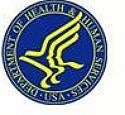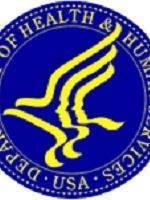Common-sense measures will save money for doctors, patients and insurers
Today, the U.S. Department of Health and Human Services (HHS) took the first steps to implement an Affordable Care Act provision that cuts red tape in the health care system and saves an estimated $12 billion over the next ten years. These savings come from improved use of electronic standards that will help eliminate inefficient manual processes and reduce costs. This is the first in a series of steps that will help reduce inefficient business processes by standardizing and improving electronic health care transactions. This will not only save health care providers and health insurance companies money, but also allow physician offices to redirect time now spent on administrative tasks to patient care. Consumers will also benefit with more complete information about their out-of-pocket costs and deductibles.
A May 2010 study in Health Affairs found that physicians spend nearly 12-percent of every dollar they receive from patients to cover the costs of excessive administrative complexity. The study found that simplifying these systems could save four hours of professional time per physician and five hours of support staff time every week – time that could be better spent on patient care.
“Doctors and health insurance companies waste thousands of hours and billions of dollars filling out forms and processing paperwork,” said HHS Secretary Kathleen Sebelius. “The Affordable Care Act is helping doctors operate more efficiently and spend their time treating patients, not filing out papers.”
The interim final rule issued today requires compliance by health plans, health care clearinghouses, and certain health care providers by January 1, 2013, and implements part of Section 1104 of the Affordable Care Act. It puts in place operating rules for two electronic health care transactions, making it easier for providers to determine:
- Whether a patient is eligible for coverage
- The status of a health care claim submitted to a health insurer
The new operating rules will provide greater uniformity of information and transmission formats so that physicians and other health care providers can use one type of information request for all insurers rather than being required to use multiple systems. For example, if a physician submits an electronic inquiry to a health plan about a patient’s eligibility, some plans may simply respond yes or no, while others provide information that the physician needs to know at the point of service, such as patient co-pays and deductibles. Under the proposed rules, physicians will get a more detailed response when they ask about the status of a claim they have submitted to a health plan.
The new rules save an estimated $12 billion for physicians, other health providers, and health insurance companies by reducing transaction costs in the form of fewer phone calls between physicians and health plans, lower postage and paperwork costs, fewer denied claims for physicians, and a greater ability to automate health care administrative processes.
Patients benefit from more accurate information about their out-of-pocket costs at the time of service, and expanded access to care as clinicians will have more time to spend treating patients by spending less time calling health plans.
The rule largely adopts operating rules developed by the Council for Affordable and Quality Healthcare’s Committee on Operating Rules for Information Exchange (CAQH CORE), a health industry coalition that focuses on ways to simplify health care administration for plans and providers. CAQH CORE offered a set of potential operating rules that are currently in use in the health care industry on a voluntary basis, and which have demonstrated a significant return on investment.
“As a pediatrician, I know how frustrating it can be to spend time dealing with paperwork instead of patient care,” said CMS Administrator Donald M. Berwick, M.D. “These rules will help health care professionals operate more efficiently, lowering their costs and reducing hassle for consumers.”
The rule announced today is the first in a series of steps that will streamline and simplify the health care system: Future administrative simplification rules will address adoption of:
- Standards and operating rules for electronic funds transfer and remittance advice;
- A standard unique identifier for health plans;
- A standard for claims attachments; and
- Requirements that health plans certify compliance with all HIPAA standards and operating rules.
The IFC with comment period may be viewed at the Federal Register at http://www.ofr.gov/inspection.aspx#special. The rule is scheduled for publication on July 8, 2011.



 />i
/>i

